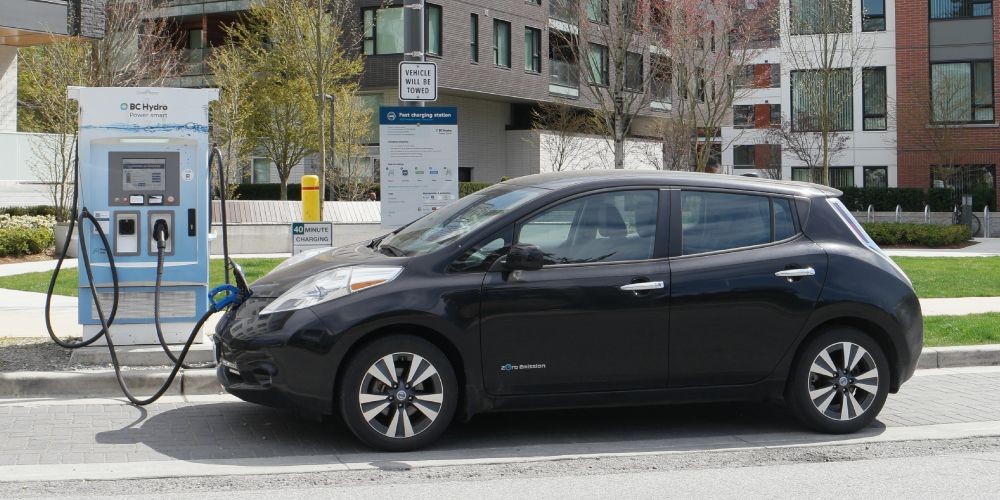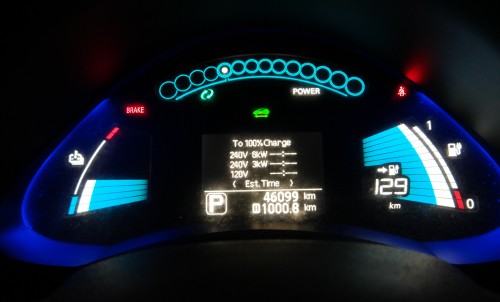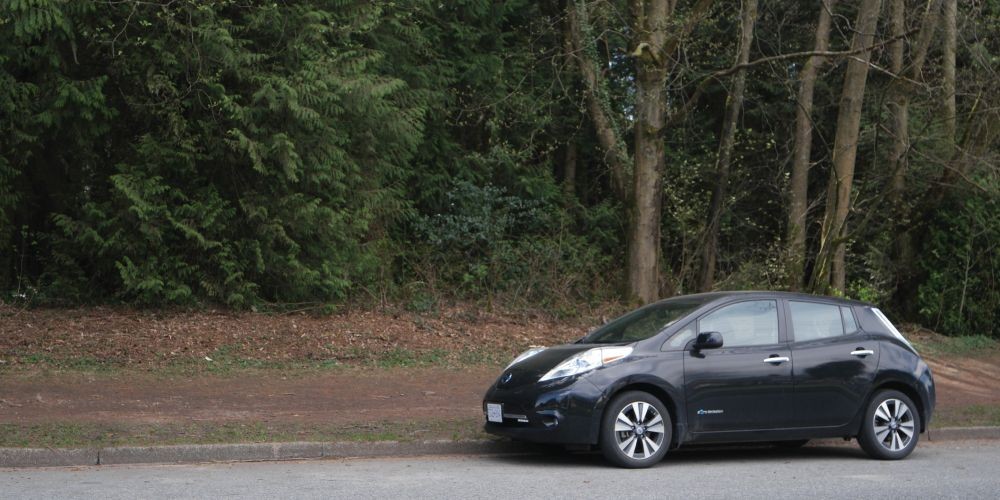After driving a 2013 Nissan Leaf for eight years and experiencing it in various conditions, this review provides a comprehensive look at whether it remains a worthwhile electric vehicle. While not without its imperfections, the Nissan Leaf offers numerous advantages, particularly for those new to the EV market. The near-elimination of maintenance, absence of fuel expenses, and minimal parts replacements are significant benefits. In my eight years of driving, maintenance has been limited to tire rotations and a single 12-volt battery replacement. The total maintenance cost over this period amounted to a surprisingly low $985 ($723.98 USD).
Charging costs are also remarkably affordable. Many public parking locations include charging as part of the parking fee, which might be around $7, an expense often incurred regardless of vehicle type. When utilizing fast charging stations for longer trips, costs typically range from $5 to $7, occasionally reaching a maximum of $10 for a more substantial charge. Annual charging expenses can vary from $200 to $800, contingent on charging frequency and the utilization of free or low-cost charging options, such as overnight wall outlet charging which can cost just pennies. Charging the battery from a standard wall outlet is a slow process, often referred to as “trickle charging” due to its minimal power draw.
This article will delve into practical aspects such as realistic range, the effectiveness of regenerative braking, charging procedures, reliability, maintenance considerations, optimal places to purchase Nissan Leafs, and tips for securing a favorable deal.
Nissan Leaf Range: Understanding Different Models
| Model Year | Battery Capacity | Approximate Range |
|---|---|---|
| 2010-2017 Nissan Leaf | 24 kWh | 84 miles / 135 km |
| 2018-2019 Nissan Leaf | 40 kWh | 158 miles / 252 km |
| 2020 Nissan Leaf | 62 kWh | 226 miles / 364 km |
The electric range of older Nissan Leaf models is a notable consideration when compared to contemporary EVs. While not ideal for extensive long-distance travel, they are well-suited for city driving and commutes. A Nissan Leaf manufactured between 2010 and 2017 is particularly appropriate for daily commuting and local journeys, which aligns with typical vehicle usage patterns. Road trips in these models are feasible but necessitate charging stops of approximately 20 to 30 minutes, requiring careful planning for travel time. For personal road trips, I generally limit distances to under 75 miles in older models to mitigate range anxiety.
Nissan Leaf models from 2010 to 2017 share largely consistent designs, with minimal changes until the 2018 redesign. The 2018 redesign brought a more modern exterior and enhanced range, extending it to 158 miles / 252 km. The 2020 Nissan Leaf marked a significant upgrade with a 62kWh battery, offering a range of 226 miles / 364 km.
For environmentally conscious buyers seeking an affordable EV without the budget for a new model, older Nissan Leaf models present a compelling option. However, for frequent road trippers, investing in an EV with extended range or a newer Nissan Leaf might be more practical. Over eight years, I have driven my Leaf approximately 32,635 miles (52,521 kilometers), primarily for local travel. During this time, the elimination of gasoline costs has been a consistent and gratifying benefit.
Charging Your Nissan Leaf: Simple and Convenient
 Charging a Nissan Leaf at a BC Hydro Fast Charger Station
Charging a Nissan Leaf at a BC Hydro Fast Charger Station
Charging a Nissan Leaf at a BC Hydro Fast Charger Station
Charging a Nissan Leaf is straightforward across all model years. Simply press the charge port button to access the charging door and connect the charging cable. A useful tip for Nissan Leaf owners is to engage the “Auto Lock” feature after plugging in the vehicle. Activating the Auto Lock button secures the charger to the car, preventing removal until charging is complete. This is especially beneficial when leaving the vehicle unattended during charging. It also allows other EV owners to utilize the charger once your vehicle is fully charged, promoting efficient use of charging stations. Fast charging at a public station typically takes 30 to 45 minutes when starting with a nearly depleted battery.
Nissan Leaf Charge Time (from empty)
- 2010-2017 Nissan Leaf 24kwh: 30 Minutes (Fast Chargers) / 2 Hours (Level 2 Chargers) / 8-10 Hours (Wall Outlet)
- 2018-2019 Nissan Leaf 40kwh: 40 Minutes (Fast Chargers) / 3-4 hours (Level 2 Chargers) / 8 hours (Wall Outlet)
- 2020 Nissan Leaf 60kwh: 1 hour (Fast Chargers) / 4-5 hours (Level 2 Chargers) / 11.5 hours (Wall Outlet)
Nissan Leaf Regenerative Braking: Recovering Energy
Nissan once created a promotional video titled “Nissan Leaf and the Volcano,” showcasing a driver in Hawaii utilizing battery power to ascend a mountain and then regenerating a significant amount of electricity on the descent. I had a similar experience while driving up the Cascade Mountains from George, Washington. Upon reaching the summit, the range indicator was critically low, essentially reading zero. However, during the descent, the regenerative braking system worked remarkably well. By the time I reached the bottom of the mountain, the indicated range had increased to 89 miles (143 km), far exceeding my initial expectations.
Nissan Leaf Reliability & Maintenance: Key Considerations
 Nissan Leaf battery gauge & instrument cluster
Nissan Leaf battery gauge & instrument cluster
Nissan Leaf battery gauge & instrument cluster
Battery Reliability: After more than 8 years of ownership, battery degradation has been minimal. Despite the vehicle’s age, the battery maintains its capacity effectively, although the car has relatively low mileage for its age. The dashboard battery gauge still displays 10 out of 12 bars, indicating robust battery health. Nissan Leaf batteries are warranted for 8 years or 100,000 miles, and significant degradation typically doesn’t occur until 60,000 to 70,000 miles. My charging habits, including frequent fast charging and regular Level 2 charging, have not noticeably impacted battery reliability.
Important Ownership Tip: Crucially, for all electric vehicles, avoid leaving the car stationary for extended periods with a low battery charge, especially in cold conditions. Allowing an EV to sit with a low charge can accelerate battery degradation. I made this mistake once, leaving my car for two weeks with only 26km of range. Upon recharging, I observed a further bar missing from the battery meter. This experience highlighted the importance of maintaining a reasonable charge level when the vehicle is not in use. This is analogous to gasoline cars where prolonged inactivity can lead to fuel sediment and spark plug issues. EV batteries are designed for active charging and discharging, and prolonged periods of inactivity at low charge levels can degrade battery material. This was a valuable, albeit expensive, lesson. Although my battery life is still commendable for a 10-year-old EV, avoiding low-charge storage could have preserved even more battery capacity.
Regarding Nissan Leaf maintenance repairs, beyond tire rotations, I have encountered no mechanical issues requiring dealer visits in 8 years. Now, after eight years, tire replacement is becoming necessary, or at least another tire rotation.
The only component I’ve had to replace on my Nissan Leaf in 8 years is also found in gasoline cars… the 12-volt battery.
Jacob Haust
The auxiliary 12-volt battery required replacement in 2020. This battery powers systems other than the electric motor and is essential for vehicle startup. The engineering rationale behind this design choice is not entirely clear. Electrical engineers in the comments are welcome to provide insights. Interestingly, the auxiliary battery is partially charged by a small roof-mounted solar panel, meaning even auxiliary power in a Nissan Leaf is partially solar-derived. The replacement cost for the 12-volt battery was $130 CAD. Adding tire rotation ($50) and a new set of tires in 2023 ($800), the total maintenance cost over 8 years is $985 ($723.98 USD).
The near absence of maintenance is a key advantage of electric vehicles. Compared to the complex systems of a combustion engine and the ongoing fuel requirements, EVs offer significantly lower ownership costs. Electric motors have minimal moving parts, eliminate gasoline needs, and require only basic upkeep like tire inflation and windshield washer fluid refills. This simplicity and reliability are especially evident in models like the Nissan Leaf.
Nissan Leaf Performance in Winter
My 2013 Nissan Leaf was equipped with all-season tires rated for winter driving. Despite reduced range in colder temperatures, Nissan Leafs generally perform surprisingly well in winter conditions. A significant advantage of EVs in winter is their weight. The substantial battery weight provides enhanced traction and grip, contributing to better handling on snow and ice. The low center of gravity, due to battery placement, further improves overall vehicle stability and performance.
Even in very cold Canadian winters, battery performance remains adequate. Range reduction is noticeable, typically around 10-20% in extreme cold. However, using seat heaters instead of the cabin heater can mitigate range loss. Parking and charging in a heated garage also helps maintain battery temperature and charging efficiency. The front-wheel-drive configuration of the Nissan Leaf, with the motor positioned over the front axle, provides excellent traction in snowy and icy conditions.
Used Nissan Leafs in the Market
 used nissan leaf pacific northwest
used nissan leaf pacific northwest
Nissan Leaf in Vancouver British Columbia Canada
In the Pacific Northwest, for example, a challenging trip was driving from Seattle, WA to Portland, Oregon in an older model. This required four charging stops each way, adding four hours to the round trip. With older EVs having around 80 miles (129 km) of range, this is less than ideal. Modern EVs like the 2020 Nissan Leaf, however, can easily manage this trip with just one charge. This illustrates the significant progress in EV technology over just eight years. For road trips, the newer 2020 Nissan Leaf is highly recommended for a more convenient and time-efficient experience. When considering a used Nissan Leaf, always check the battery meter for 11 or 12 bars, indicating good battery condition and longevity.
For those in metropolitan areas seeking a budget-friendly EV, a used Nissan Leaf is an excellent choice. Especially in cities like Portland or Seattle, with extensive EV charging infrastructure. Portland boasts over 200 public EV chargers (excluding Tesla locations), and Washington state has over 1600 charging stations. Seattle alone offers over 250 chargers.
In urban environments characterized by frequent stop-and-go traffic, used Nissan Leafs excel. Regenerative braking in city driving can actually generate more energy than the car consumes. Driving in downtown Seattle, I once gained 10 miles of range through regenerative braking alone. This capability of EVs is a feature gasoline cars cannot match.
Buying a Used Nissan Leaf: Finding a Deal
Searching for “Nissan dealership near me” will reveal a surprising number of used Leafs available. Nissan has produced over half a million Leafs globally, resulting in a substantial used market across North America. Used Nissan Leafs can be found for as low as $9,000, with most priced between $14,000 and $19,000 with relatively low mileage.
A key tip for securing a great deal on a used Nissan Leaf is to explore dealerships of competitor brands. When a Nissan Leaf is traded in at a competing dealership, they are often motivated to sell it quickly as it’s not their primary brand. These dealerships frequently offer Leafs at prices thousands of dollars lower than Nissan dealerships.
2020 Nissan Leaf Price Range (USD)
$32,000 – $42,000
2010-2017 Used Nissan Leaf Price Range (USD)
$5,000 – $29,000
The Nissan Leaf’s impact on reducing fossil fuel consumption is substantial. Each Nissan Leaf sold potentially prevents the burning of over 522 gallons of gasoline per year (based on comparisons with a similarly sized gasoline car, like a VW Golf). For every 100 Nissan Leafs on the road, this translates to over 52,200 gallons of gasoline saved annually. With over 500,000 Nissan Leafs produced globally, this could represent over 261 million gallons of gasoline saved per year if every Nissan Leaf replaced a gasoline car.
The total maintenance and charging costs for my Nissan Leaf over eight years are less than what an equivalent gasoline car would consume in fuel costs in just a few months. This firsthand experience underscores the significant cost savings of EV ownership, both in fuel and maintenance.
In conclusion, the Nissan Leaf stands out as a highly reliable EV. The total maintenance cost over 8 years was only $985 ($723.98 USD), and overall ownership costs, including minimal charging expenses, remain exceptionally low. The primary drawback of older Nissan Leafs, like my 2013 model, is the limited range of 84 miles/135 kilometers. However, for urban driving, this range is often sufficient. The newer 2020 Nissan Leaf with its extended 226 miles / 364 km range addresses this limitation effectively. For those seeking an affordable and reliable electric vehicle for city commuting, a used Nissan Leaf is an excellent option.
